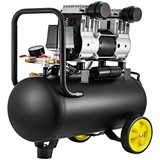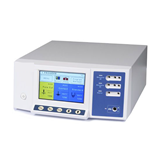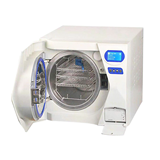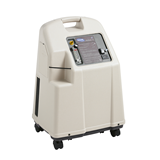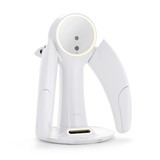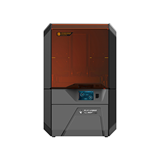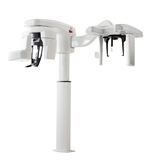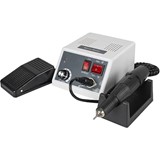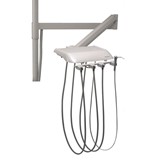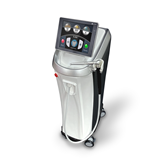Key takeaways
- The global dental 3D printing market has surpassed $4.6 billion in 2023 and is projected to grow to $15–30 billion by 2030–35, depending on forecast, at annual growth rates between 10.9% and 24%.
- Australia’s market is expanding rapidly, valued at $52 million in 2023 and expected to reach $280 million by 2030, growing at a staggering 27.2% CAGR.
- Price ranges for dental 3D printers in Australia (2025 estimates):
- Entry-level: $900–1,800
- Mid-range: $3,700–10,500
- Premium: $13,500–25,500+
- Material costs: Biocompatible resins range from $220–600+ per litre, while standard resins sit closer to $220–300 per litre.
- Consumables: Resin tanks cost $75–300; build platforms and filters vary, while post-processing equipment (wash and cure stations) can add $700–2,000.
- Financing options such as leasing are increasingly available in Australia, making high-end systems more accessible for smaller practices.
- Compliance is critical: In Australia, dental 3D printers and resins must be TGA-approved if they produce devices intended for patient use. Imported machines must be accompanied by evidence of CE certification or ISO-compliant materials.
Introduction
Digital dentistry is no longer a future concept, it is happening now. Around the world, clinics and laboratories are embracing 3D printing to produce crowns, bridges, aligners, surgical guides, and dentures with greater speed and precision.
Australia is at the forefront of this adoption, with the domestic market worth $52 million in 2023 and forecast to surge past $280 million by 2030. This rapid growth signals that dental 3D printing is becoming not just an optional tool but a competitive necessity.
This comprehensive guide will help you understand the types of dental 3D printers, price ranges, operations, maintenance, parts, financing, warranties, and compliance requirements in Australia. It also answers common questions buyers ask before investing in these systems.
Understanding the market landscape
The global dental 3D printing industry is growing at a strong pace, valued at over $4.6 billion in 2023, with projections ranging from $15 billion to $30 billion by 2030–35.
In Australia, the sector is expanding even faster than the global average, with a 27.2% compound annual growth rate. This reflects both rising adoption in dental laboratories and increasing demand from clinics for in-house 3D printing to reduce turnaround times and costs.
This data shows that investing in a dental 3D printer in 2025 is not just about improving workflow now, it’s about ensuring you are not left behind as the industry transforms.
Types of dental 3D printers
SLA (Stereolithography)
- Uses a laser to cure liquid resin, layer by layer.
- Produces extremely high-resolution models with smooth surfaces, ideal for crowns, bridges, aligners, and precise fit appliances.
DLP (Digital Light Processing)
- Uses a projector to cure an entire layer of resin in one go.
- Faster than SLA, making it suitable for higher-volume production in labs.
LCD / Masked SLA
- Uses UV LCD screens to cure layers simultaneously.
- A balance of cost, speed, and resolution, popular in mid-range machines.
FDM (Fused Deposition Modelling)
- Uses melted plastic filament to build models.
- Affordable and simple, but lacks the fine detail required for final dental restorations. Best for prototypes and study models.
SLS (Selective Laser Sintering)
- Uses a laser to fuse powdered material, producing very strong parts.
- More expensive, but excellent for durable appliances and complex geometries.
Summary for buyers:
- Clinics producing chairside devices: SLA, DLP, or LCD are best.
- Labs needing fast throughput: DLP.
- Low-budget, training, or study models: FDM.
- Implant frameworks and complex work: SLS or metal 3D printers.
Price ranges and total cost of ownership
Upfront printer costs
- Entry-level ($900–1,800): Great for beginners or training but often lack dental resin certification.
- Mid-range ($3,700–10,500): Popular among dental clinics, striking a balance between cost and reliability.
- Premium ($13,500–25,500+): Professional-grade printers designed for labs and high-volume clinics.
High-end laboratory systems can even exceed $35,000 depending on automation and build size.
Ongoing costs (TCO)
- Resins: $220–300 per litre for standard; $400–600+ for biocompatible or surgical resins.
- Consumables: Resin tanks ($75–300), build platforms ($150–400).
- Post-processing equipment: Washing and curing stations add $700–2,000.
- Software and training: Specialist CAD/CAM software subscriptions often range $600–1,500 per year.
- Service contracts: Extended warranties and support packages can cost $1,500–3,500 annually, depending on coverage.
When budgeting, it’s essential to factor these into your cost per part, not just the initial machine cost.
Operations and workflow integration
Integrating a 3D printer into your clinic or lab requires:
- Digital scanners: Intraoral scanners capture impressions, which feed into the design workflow.
- CAD software: Used to design appliances.
- Printer operation: Typically requires trained staff, though modern interfaces are more user-friendly.
- Post-processing: Printed items must be washed, cured, and polished before use.
Workflow efficiency often determines your ROI. A well-planned system can reduce lab turnaround times from weeks to just hours.
Maintenance and parts
Routine maintenance
- Clean build plates and resin tanks after each print.
- Calibrate the printer periodically to maintain precision.
- Replace filters and keep the UV shielding in good condition.
Common replacement parts
- Resin tanks: $75–300 each, depending on printer brand.
- Build platforms: $150–400.
- UV curing modules or lamps: $200–500 if they fail.
Maintenance is generally straightforward but requires consistency to avoid downtime.
Financing and warranties
Financing
Many Australian suppliers offer:
- Leasing plans: Allowing practices to spread costs over 3–5 years.
- Rental agreements: For short-term or trial adoption.
- Third-party financing: From equipment finance brokers, often with tax benefits.
Warranties
- Most printers include a 12-month manufacturer warranty.
- Extended coverage is highly recommended, especially for practices relying heavily on in-house production.
- Check whether warranties include local service technicians in Australia, as shipping parts overseas can cause costly downtime.
ROI and case study example
When investing in a dental 3D printer, the key question for most practices is whether the system will pay for itself. In Australia, dental 3D printing can quickly reduce costs, shorten turnaround times, and open new revenue streams.
Calculating ROI in practical terms
To estimate return on investment, consider:
- Initial investment: printer, post-processing equipment, software, and training.
- Ongoing costs: resin, cleaning agents, maintenance, and replacement parts.
- Labour and outsourcing savings: reduced time, fewer manual steps, and faster turnaround.
- Revenue impact: the ability to produce devices in-house rather than outsourcing.
Case study: Sydney general dental clinic
- Investment: $32,000 for a mid-range resin-based printer and a post-processing unit.
- Monthly consumables: $2,400 for resins, cleaning supplies, and routine maintenance.
- Applications: clear aligners, night guards, and study models.
- Savings and revenue impact: previously, aligner models were outsourced at $80 per unit. By producing in-house, the cost per unit dropped to $10. With a monthly production of 120 models, the clinic saved approximately $8,400 per month.
In this example, the initial investment was recovered in just under five months, demonstrating how dental 3D printing can be financially advantageous even for small-to-medium practices.
Compliance and TGA certification
In Australia, compliance is critical. Dental devices and materials intended for patient use must meet the requirements of the Therapeutic Goods Administration (TGA). Using unapproved printers or resins for patient devices can result in legal penalties and professional risk.
Why compliance matters
- Legal use: Only TGA-approved printers and resins can be used for appliances that contact patients.
- Patient safety: Biocompatible, sterilisation-safe materials are essential to avoid adverse outcomes.
- Professional risk: Non-compliant equipment can invalidate insurance coverage and expose the practice to liability.
Key compliance checks for buyers
Before purchasing a dental 3D printer in Australia, ensure:
- The printer model is listed on the Australian Register of Therapeutic Goods (ARTG).
- All resins and consumables are TGA-approved for dental use, not just for prototyping or models.
- The supplier provides documentation confirming ARTG registration and intended use.
- Warranty and service agreements maintain compliance over the machine’s lifetime.
Common compliance mistakes
- Assuming overseas printers approved under CE or FDA regulations are automatically TGA-compliant.
- Using non-dental resins to reduce costs.
- Overlooking proper documentation from suppliers, leaving the practice unprotected.
By prioritising compliance, practices protect both patients and the business while ensuring that investment in dental 3D printing is safe, legal, and fully utilitarian.
Frequently asked questions
Q: How quickly will my investment pay off?
For high-volume clinics and labs, payback can occur in 6 months to 2 years, depending on usage.
Q: Can I use a low-cost printer under $1,500 for dental devices?
Technically yes, but most budget printers lack certified resins and validated workflows. They are better suited for study models, not clinical appliances.
Q: What hidden costs should I expect?
Certified resins, consumables, service contracts, and software subscriptions. These can easily add $2,000–5,000 per year beyond the printer.
Q: How important is TGA compliance?
Critical. Without it, appliances made with uncertified printers or resins cannot legally be used in patients.
Q: How much ongoing maintenance is required?
Daily cleaning and inspection, monthly calibration, and annual servicing. Replacement parts may cost $500–1,000 annually depending on usage.
Q: Which is better, SLA or DLP?
SLA provides finer detail; DLP is faster for batch production. For most clinics, DLP strikes the best balance.
Conclusion
Dental 3D printing is reshaping dentistry in Australia. With the market expanding from $52 million in 2023 to an expected $280 million by 2030, the question is not whether to invest but how to invest wisely.
By understanding the different printer technologies, price ranges, ongoing costs, workflow integration, financing, and compliance obligations, you can choose a solution that boosts efficiency, reduces costs, and improves patient outcomes, while future-proofing your practice or lab for the digital dentistry era.





